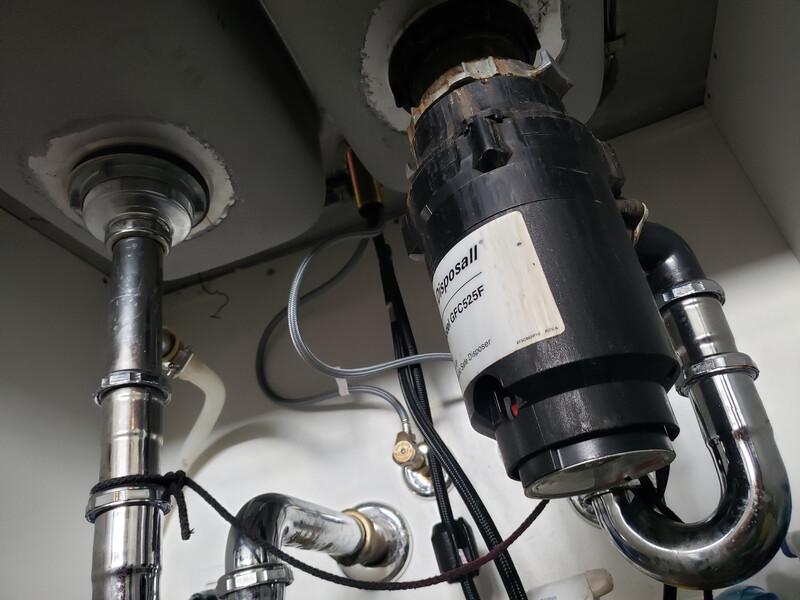Swift Solutions for Fixing a Dripping Waste Disposal Unit
Swift Solutions for Fixing a Dripping Waste Disposal Unit
Blog Article
How do you really feel in relation to How to fix a pretty consistent leak from my garbage disposal?

Garbage disposals are essential kitchen area appliances that help in taking care of food waste efficiently. Nevertheless, a dripping waste disposal unit can be an aggravating and unpleasant issue to handle. Fortunately, numerous leakages can be dealt with quickly with a couple of easy steps. In this article, we will talk about exactly how to deal with a leaking garbage disposal successfully.
Intro
Waste disposal unit are mounted under kitchen area sinks and are created to shred food waste right into smaller pieces, permitting it to go through the pipes system easily. While these gadgets are typically trusted, leakages can happen in time because of deterioration, loose links, or damage to the system.
Typical Reasons For Leaks in Garbage Disposals
Worn Seals and Gaskets
Seals and gaskets play a crucial duty in protecting against water from leaking out of the garbage disposal. Over time, these components can deteriorate, leading to leaks around the disposal device.
Loose Connections
The connections between the waste disposal unit and the plumbing system can come to be loose with time, causing water to leak out during procedure.
Fractures or Holes in the Disposal System
Physical damage to the waste disposal unit, such as splits or openings in the housing, can additionally result in leaks.
Recognizing the Resource of the Leakage
Before attempting to deal with a leaking garbage disposal, it is necessary to determine the source of the leakage. This can normally be done through aesthetic assessment or by performing basic tests.
Visual Evaluation
Inspect the garbage disposal device very carefully for any type of indicators of water leak. Pay very close attention to areas around seals, gaskets, and link points.
Checking for Leaks
One method to test for leakages is by running water through the disposal device and looking for any noticeable signs of leak.
Tools and Products Needed for Fixing a Dripping Garbage Disposal
Prior to starting the repair work procedure, gather the needed tools and products, including a screwdriver, flexible wrench, plumbing's putty, replacement seals or gaskets, and epoxy or patching material for fixing cracks or holes.
Step-by-Step Guide to Dealing With a Dripping Garbage Disposal
Turn Off the Power
Before attempting any type of fixings, make sure that the power to the waste disposal unit unit is turned off to stop the danger of electric shock.
Find the Leakage
Recognize the specific area of the leakage and establish the cause.
Tighten up Connections
Utilize a wrench to tighten any type of loose connections between the disposal device and the plumbing system.
Change Seals or Gaskets
If the leak is due to used seals or gaskets, remove the old components and change them with new ones.
Patching Splits or Holes
For fractures or holes in the disposal system, use epoxy or a suitable patching material to secure the damaged location.
Testing the Waste Disposal Unit After Fixing
When the repair work is total, evaluate the waste disposal unit by running water via it to make certain that the leak has been solved.
Preventive Upkeep Tips to Avoid Future Leaks
To stop future leakages, it is necessary to execute regular upkeep on your waste disposal unit. This consists of maintaining it tidy, staying clear of placing non-food products or difficult items down the disposal, and occasionally looking for leakages or other issues.
Final thought
To conclude, repairing a dripping waste disposal unit is a reasonably uncomplicated procedure that can be finished with standard tools and products. By complying with the actions outlined in this write-up and practicing precautionary maintenance, you can keep your waste disposal unit in good working condition and prevent expensive repair services in the future.
What to Do About a Leaking Garbage Disposal
A leaking garbage disposal often goes unnoticed until you confront a sopping cabinet, a foul-smelling puddle, or an audible drip-drip-drip from the unit. The fix can be frustrating, too, because the leak can stem from a number of components in the system. Fortunately, with a little sleuthing, you can zero in on the leak and—depending on the exact location—stop the icky oozing and repair the component that caused it. Worst case scenario, if it turns out that the garbage disposal must be replaced, installing a new one is a reasonable do-it-yourself task for those with basic plumbing skills. Read on to keep the cash you’d otherwise hand over to a pro.
Prepare to find the leak
Prior to testing the garbage disposal for leaks, unplug it at the wall outlet and turn off the power from the breaker box to prevent electrical shock. Then insert a watertight sink stopper into your sink drain and wipe the unit dry with a clean cloth. In any handy container, mix a few drops of food coloring into a few cups of water, and pour the dyed water onto the sink stopper to help you locate the leak.
Investigate the source
the top, where the disposal meets the sink drain the side, where the dishwasher hose or main drain pipe connects to the disposal or the bottom of the unit Inspect each of these locations while gliding a light-colored rag over the unit; the dyed water will readily show on the rag and reveal the location of the leak. If a leak isn’t immediately apparent, remove the sink stopper and pour a few more cups of dyed water down the sink drain, then check for leaks again. Leaks near the top of the unit are more likely to show themselves while the sink is plugged, while side and bottom leaks are more noticeable while the sink is unplugged.
The metal sink flange that sits directly inside the sink drain is typically sealed around the top with plumber’s putty (a clay-like sealant) and then secured from under the sink with bolts. If the plumber’s putty deteriorates, or the bolts loosen, the flange can no longer form a watertight seal between the sink drain and the disposal—which could cause a leak at the top of the unit.
To reseal the leaky flange, you must first detach the garbage disposal. Start by loosening the screws securing the main drain pipe to the disposal, then loosen the screws in the metal clamp securing the dishwasher hose to the disposal and detach the drain pipe and dishwasher hose from the disposal. Loosen the screws in the mounting ring that connects the disposal to the metal mounting assembly beneath the sink, then pull down the disposal and carefully set it on a clean, dry surface. Loosen the bolts in the mounting assembly with a wrench, then pull down the mounting assembly and set it near the disposal.

As a reader about Why Is My Garbage Disposal Leaking From the Bottom?, I was thinking sharing that chunk was essential. Do you know somebody else who is looking into the subject? Feel free to share it. Kudos for your time. Kindly stop by our site back soon.
Schedule Estimate Report this page